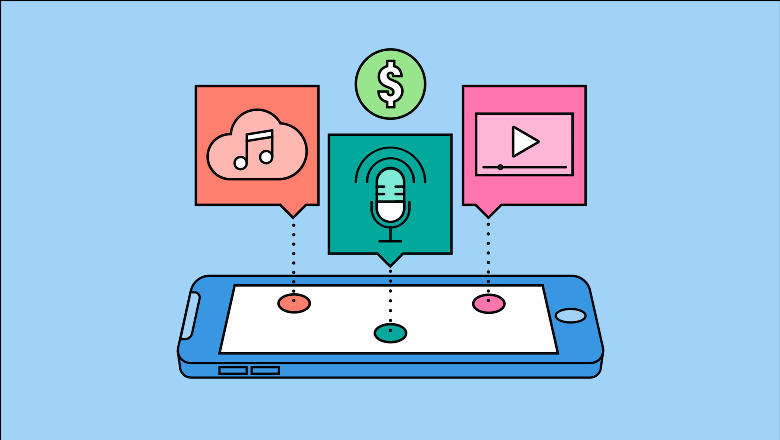Who Are Nomad Creators? Behind Instagram Travel Photos 🌍

Behind every perfect sunset photo is someone desperately searching for WiFi and wondering if their laptop will survive another flight.
You know those people on Instagram posting perfectly curated shots from Bali coffee shops while casually mentioning they “work from anywhere”?
Yeah, those are nomad creators, and spoiler alert – their life isn’t as glamorous as their feed suggests.
But before you roll your eyes and scroll past another “office view” post featuring a beach, let me tell you what nomad creators actually are, what they really do, and why understanding this growing tribe might be more important than you think.
Who Are Nomad Creators Anyway?

Nomad creators are basically content creators who’ve said “screw the traditional office” and decided to build their entire business around location independence.
They’re digital nomads who create content; whether that’s blogs, YouTube videos, courses, or social media – while bouncing between countries like they’re collecting passport stamps for a prize.
But here’s where it gets interesting: they’re not just travel bloggers with fancy cameras. These folks have built legitimate businesses that happen to be portable. Think of them as entrepreneurs who’ve figured out how to make money from their laptop while sitting in a hammock in Thailand.
The nomad creator lifestyle has exploded in the past few years, especially post-COVID, when everyone realized that maybe, just maybe, you don’t need to sit in a gray cubicle to be productive.
Different Types of Nomad Creators (It’s Not All Beach Photos)

1. The Course Creators
These are the folks selling online courses about everything from “How to Start a Dropshipping Business” to “Master Instagram Reels in 30 Days.” They’ve turned their expertise into digital products they can sell from anywhere with decent internet.
Income range: $2,000 – $50,000+ per month (the successful ones are making bank)
2. The YouTube Nomads
They document their travels, share tips, or teach skills through video content. Some focus purely on travel content, others use travel as a backdrop for business or lifestyle advice.
Popular channels like “Kara and Nate” or “Eamon & Bec” have turned wanderlust into serious revenue streams through ad revenue, sponsorships, and affiliate marketing.
3. The Affiliate Marketing Wizards
These creators make money by promoting products and services they actually use while traveling.
From travel gear to software tools, they’ve mastered the art of authentic recommendations that convert.
4. The Service-Based Nomads
Freelancers offering services like copywriting, design, social media management, or consulting. They’re not necessarily creating content about travel – they’re just doing their regular work from extraordinary locations.
5. The Blog-to-Business Builders
Started with travel blogs and evolved into full-fledged media companies.
They’ve built audiences around their adventures and monetized through multiple revenue streams.

How Do These People Make Money?

Let’s cut through the bullshit and talk actual revenue streams, because “living your best life” doesn’t pay for plane tickets.
Content Monetization
- YouTube ad revenue: $1-5 per 1,000 views (varies by niche)
- Sponsored posts: $100-10,000+ depending on follower count and engagement
- Affiliate commissions: 3-30% of sales from recommended products
- Brand partnerships: $500-50,000+ for campaign collaborations
Digital Products
- Online courses: $97-2,997+ per course sale
- Ebooks and guides: $19-197 typical pricing
- Templates and presets: $5-100+ for design resources
- Membership sites: $29-297+ monthly recurring revenue
Services
- Coaching/consulting: $100-500+ per hour
- Done-for-you services: $1,000-10,000+ per project
- Speaking engagements: $1,000-25,000+ per event (virtual or in-person)
The reality? Most nomad creators aren’t making millions. The successful ones are pulling in $5,000-20,000 monthly, which goes pretty far in places like Mexico, Thailand, or Portugal.

The Tools That Keep Nomad Creators Running
Content Creation Tools
- Canva Pro: Design everything on the go
- Frase AI: Create SEO optimized blog posts
- Blogify: Turn anything into a blog with AI
- ADcreative AI: Create smart and converting Ads with AI
- Descript: For serious video/audio editing
- Ocoya or Iconosquare: Effective social media scheduling)
- GetResponse: $29-79/month (email marketing)
- Repurpose.io: Content repurposing
Business Management
- Notion: Project management and organization
- Zoom: Client calls and content creation
- Stripe/PayPal: Transaction fees for payment processing
- QuickBooks: Expense tracking for taxes
Travel-Specific Gear
- Portable WiFi hotspots: $5-15/day rental or $200-400 purchase
- Noise-canceling headphones: $200-400 investment
- Lightweight laptop: $800-2,500 depending on needs
- Universal adapters and portable chargers: $50-150 total
The Dark Side Nobody Talks About

Here’s what those sunset Instagram posts don’t show you:
The Loneliness Factor
Constantly moving means constantly saying goodbye.
Building meaningful relationships becomes challenging when you’re always the outsider looking in.
The Burnout Reality
When your life is your content, you never really get a break.
Every experience becomes potential content, which can suck the joy out of actual experiences.
The Financial Rollercoaster
Income fluctuates wildly.
One month you’re making $15K, the next month the algorithm changes tank your reach, and you’re scrambling to pay for your Airbnb.
The Health Struggles
Irregular schedules, constant travel stress, and inconsistent healthcare access take a toll. Plus, try maintaining a workout routine when you’re living out of a suitcase.
The Tax Nightmare
Filing taxes as a nomadic creator is like trying to solve a Rubik’s Cube blindfolded.
Multiple countries, various income streams, and changing regulations make accounting a full-time headache.
Countries Where Nomad Creators Thrive

The Usual Suspects
- Thailand: Cheap cost of living, good infrastructure, nomad-friendly visas
- Mexico: Close to US time zones, affordable, decent internet
- Portugal: EU access, growing nomad community, reasonable costs
- Indonesia (Bali): Instagram-worthy locations, low expenses, established nomad scene
The Emerging Hotspots
- Estonia: Digital nomad visa program, tech-friendly environment
- Barbados: 12-month Welcome Stamp for remote workers
- Dubai: No income tax, luxury lifestyle, excellent connectivity
- Georgia: 365-day visa-free stay, extremely low costs

Skills You Need (Beyond Taking Pretty Pics)
Content Creation Basics
- Writing: Even video creators need scripts and captions
- Basic design: Canva skills are non-negotiable
- Video editing: At least enough to create watchable content
- SEO understanding: How else will people find your shit?
Business Skills
- Email marketing: Your audience needs nurturing
- Sales psychology: Converting followers to customers
- Analytics interpretation: What’s working and what isn’t?
- Time management: Balancing creation with business operations
Technical Requirements
- Social media platform knowledge: Each platform has its own rules
- Basic website management: WordPress, Ghost, or similar platforms
- Payment processing setup: Getting paid shouldn’t be complicated
- Backup systems: Losing your work in a café is not romantic
Different Revenue Models Explained
The Audience-First Approach
Build a massive following first, monetize later. This takes longer but creates more sustainable income streams.
Think of creators like “Hey It’s Camille” or “Matt D’Avella” who built audiences before selling anything.
The Product-First Strategy
Create valuable products or services, then build an audience to sell to.
Faster to revenue but requires upfront product development. Many course creators follow this model.
The Hybrid Model
Mix of content creation, affiliate marketing, and service offerings. Most successful nomad creators use this approach because it diversifies income and reduces risk.
Red Flags to Watch Out For
The Fake It Till You Make It Crowd
- Renting luxury locations for photos while living in hostels
- Inflated income claims without proof
- Selling courses about making money online when they’re not actually profitable
- “Guru” positioning after 6 months of travel
The Unsustainable Lifestyle Promoters
- Promoting constant travel without acknowledging the downsides
- Ignoring visa requirements and legal obligations
- Encouraging people to quit their jobs without backup plans
- Selling “location independence” without teaching actual skills
What’s next for Nomad Creators
This isn’t just a trend that’ll disappear when people get tired of avocado toast photos. The nomad creator economy is evolving into something more sophisticated:
Specialization is Increasing
Generic travel content is becoming saturated. Successful nomad creators are niching down – focusing on specific demographics, locations, or expertise areas.
Platform Diversification
Smart creators aren’t putting all their eggs in the Instagram basket. They’re building email lists, creating podcasts, and developing multiple content channels.
Community Building
The most successful nomad creators are building communities around their content. Private Facebook groups, Discord servers, and membership sites create recurring revenue and deeper connections.
Local Integration
Instead of just passing through countries, many nomadic creators are spending 3-6 months in each location, creating deeper content and building local partnerships.
Should You Become a Nomad Creator?
Here’s the real talk: becoming a nomad creator isn’t for everyone, and it’s definitely not a shortcut to easy money or endless vacation.
Consider this path if:
- You have marketable skills that translate to digital products/services
- You’re comfortable with income uncertainty
- You genuinely enjoy creating content (not just the idea of it)
- You can handle isolation and constant adaptation
- You have some savings to survive the initial building phase
Stay away if:
- You’re looking for quick money or easy passive income
- You need consistent social connections and a routine
- You’re not willing to treat it like a real business
- You think it’s all about taking pretty photos
- You can’t handle the administrative nightmare of nomadic taxes
Real Success Stories (Without the BS)
The Practical Wanderers
Creators like “Nomadic Fanatic” who focus on practical advice for RV living and budget travel.
They’re not selling courses about getting rich – they’re helping people actually live the lifestyle.
The Skill Teachers
People like “Peter McKinnon” who use travel as a backdrop for teaching photography and videography.
Their location independence supports their teaching, not the other way around.
The Authentic Documentarians
Creators who honestly document both the highs and lows of nomad life, providing realistic expectations for their audience.

Tools for Aspiring Nomad Creators
Content Planning
- SocialBee: Visual content calendar
- Monday.com: Project organization
- Google Workspace: Collaboration and storage
Analytics and Growth
- Social Blade: Free (social media analytics)
- Google Analytics: Free (website traffic insights)
- Hotjar: $32/month (user behavior tracking)
Monetization Platforms
- Gumroad: 3.5% + $0.30 per transaction (digital product sales)
- LearnWorlds: Online course hosting
- Patreon: 5-12% platform fee (subscription revenue)
Your Read: My 4 Must-Have WordPress Tools for AI Blogging in 2025 and Beyond
FAQs
How much money do nomad creators actually make?
It varies wildly. Beginners might make $500-2,000 monthly, while established creators can earn $10,000-50,000+ per month.
The median successful nomad creator probably makes around $5,000-8,000 monthly, which goes far in lower-cost countries.
Do you need a huge following to become a nomadic creator?
Not necessarily. Micro-influencers (10K-100K followers) often have better engagement rates and can monetize effectively.
Some creators make good money with just 5,000 highly engaged followers in specific niches.
What’s the biggest challenge nomad creators face?
Inconsistent income and the pressure to constantly create content. When your life becomes your business, burnout is real.
Plus, handling taxes across multiple countries is a nightmare.
How long does it take to become profitable as a nomadic creator?
A: Most successful creators take 12-24 months to reach sustainable income levels.
The first 6 months are usually about building an audience and testing monetization strategies.
What equipment do nomad creators actually need?
A reliable laptop, smartphone with a good camera, portable WiFi backup, noise-canceling headphones, and basic lighting equipment.
Total investment: $2,000-5,000 for quality gear that’ll last.
Is the nomadic creator lifestyle sustainable long-term?
A: For some, yes. But many creators eventually settle in 1-2 base locations rather than constantly traveling.
The key is building business systems that don’t require constant movement.
How do nomad creators handle taxes?
It’s complicated and usually requires professional help. Many establish tax residency in nomad-friendly countries or use services like Remote Year’s tax assistance.
Budget $2,000-5,000 annually for proper tax planning.
What’s the difference between nomad creators and regular travel bloggers?
Nomad creators build diversified businesses that happen to be location-independent. Travel bloggers focus primarily on travel content.
Nomad creators might teach marketing, sell courses, or offer services – travel is just the backdrop.
Do nomad creators actually work less than traditional workers?
Hell no. Most work 50-70 hours per week, especially when building their business.
The flexibility is in when and where they work, not necessarily working less.
What’s the failure rate for aspiring nomad creators?
High.
Probably 80-90% don’t make it past the first year due to unrealistic expectations, lack of business skills, or inability to handle the lifestyle challenges. Success requires treating it like a real business, not an extended vacation.





